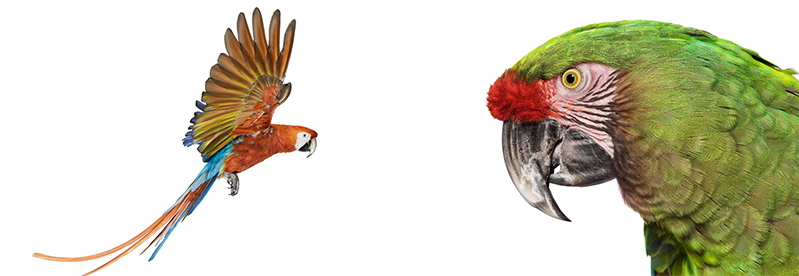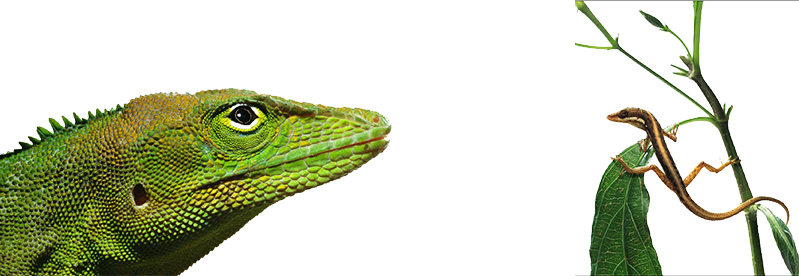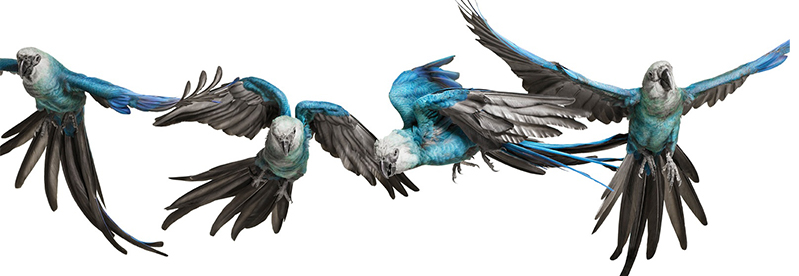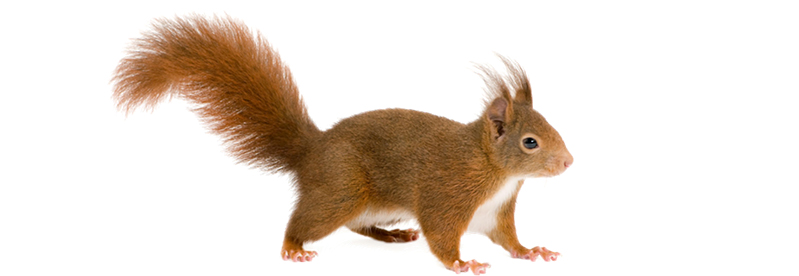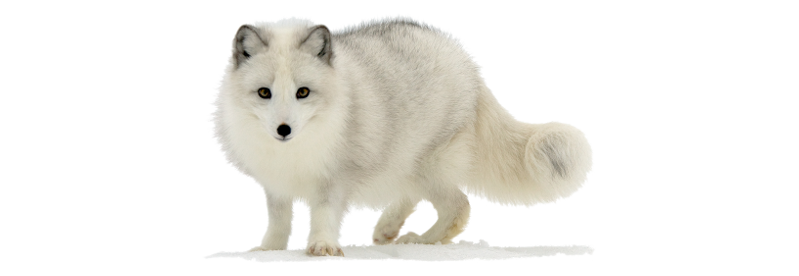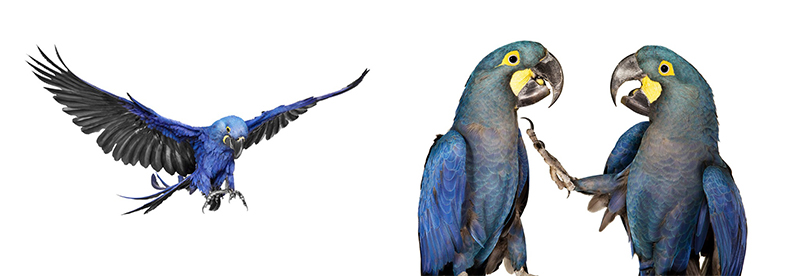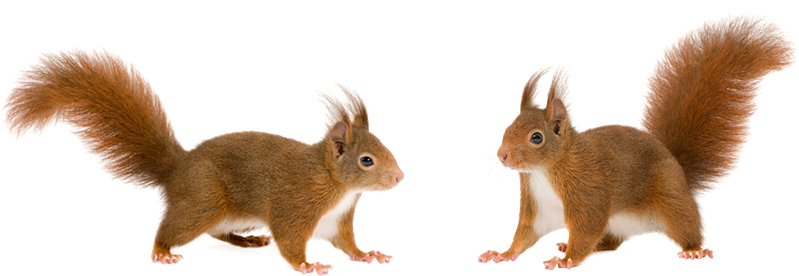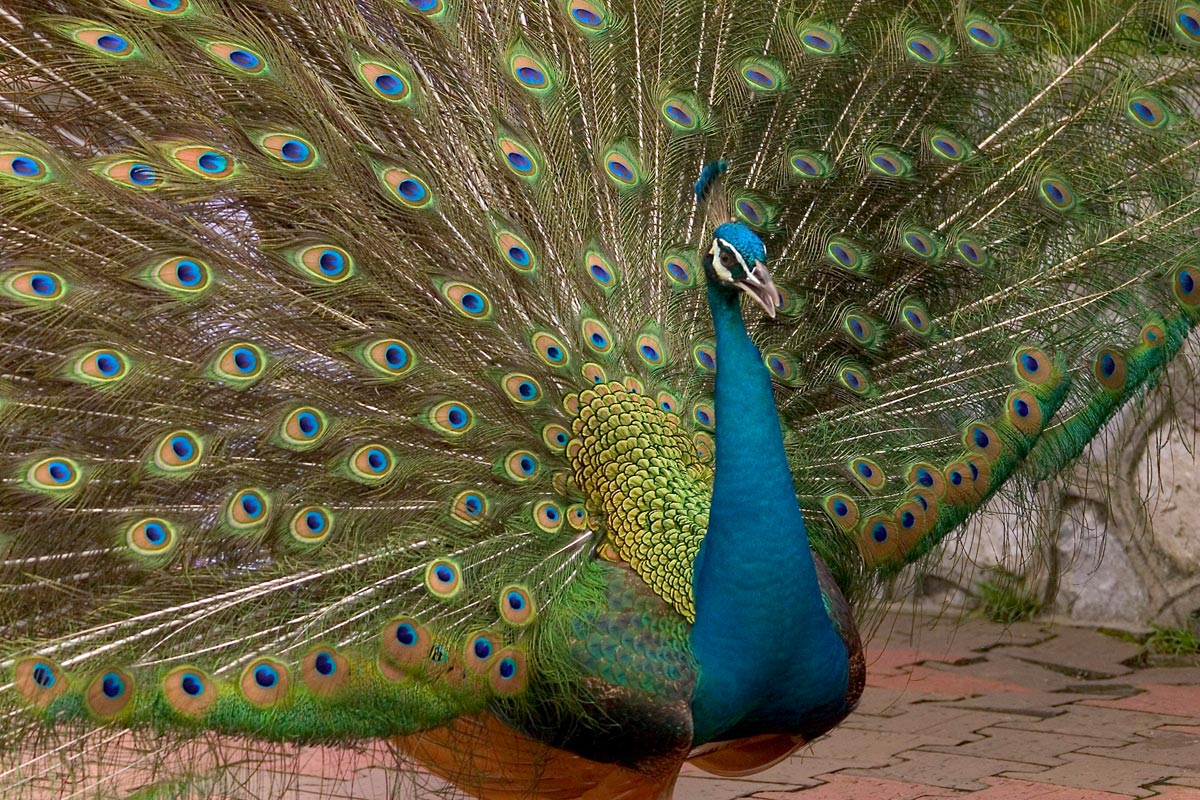
Indian peafowl,orBlue peafowl(Pavo cristatus)
Phylum —chordata
Class — aves
Order — galliformes
Family — phasianidae
Genus – pavo
Appearance
Indian peafowl are known best for their exquisite train and plumage. If the length of the tail and wing span is included, the peafowl is considered one of the largest flying birds. They weigh in between 2.7-6 kg and have a wingspan of 1.4-1.6 m.
This species has long, strong, grayish-brown legs equipped for running away into brush for safety. Both sexes are equipped with spurs that are around 2.5 cm long; males will use them during the breeding season to ward off other competing males. Females are brown, grey, and cream-colored. Chicks are usually a light yellow to brown color. The males have a long train, about 1.2 m in length on average, from June to December. The train is discarded in January, but is grown again at a rapid pace when breeding season approaches. Their necks and breasts are a bright blue, golden feathers line their sides and backs, and their trains are an iridescent arrangement of multiple colors featuring ocelli (eye-spots). When displayed, the male’s train spreads out in a wide fan, showing off gold, brown, green, and black feathers. Around 30 to 40 of the ocelli around the outer edges of the fan are not round but v-shaped. This complicated pattern is thought to be an advantage in mating, and even though it might seem like this bright pattern would make peafowl stand out, they can very easily disappear into foliage, making it extremely hard to spot.
Habitat
Indian peafowl are native to Sri Lanka and India, but can also be found naturally in Pakistan, Kashmir, Nepal, Assam, Nagaland, Burma, Java, Ceylon, Malaya, and the Congo.
Behavior
Indian peafowl prefer a mostly solitary and isolated lifestyle. During the breeding season, a male will defend its territory and females will seek them out as mates. A single male can have a harem of six females. Outside of the breeding season, females live alone or with other females in groups of 2 or 3. Males also can live in small groups with other males or alone.
This species is very cautious and always alert to spot any potential danger. Its head is always moving about, searching its surroundings for any predators.
Indian peafowl are diurnal, seeking protection high up in trees when it sleeps. Pavocristatus only flies to the lowest branch, and then works its way up branch by branch until it has reached a safe height. This can sometimes be a very obvious roosting place, but it is very effective for avoiding its natural predators.
Indian peafowl require a lot of water to drink, but will not bathe in water because it weighs down their feathers. If their feathers do get wet, they wait in a safe location until they are dry. Instead of water baths, they take dust baths which help to get rid of any parasites or bugs. Peafowl spend a lot of time preening their feathers, especially the males whose mating success is very reliant on their displays.
Males will tend not to display when high winds make it too difficult to maintain their balance. However, their trains can be used for other purposes. Males will display as an intimidating factor against other males or other aggressive species. When fighting another male, the bird will leap up in the air and slash down at the defending male with their spurs. If they are attacked, they run away into dense undergrowth. Their coloring makes it almost impossible to spot once hidden away in shrubbery. If cover is not available and they are forced to take flight, they do not fly very fast or very far.
Diet
Indian peafowl are omnivorous. They consume insects, worms, lizards, frogs, and snakes. Termites are their food of choice. They also feed on tree and flower buds, petals, grain, and grass and bamboo shoots. In order to help with the breakdown of their food, peafowl will ingest pebbles which are stored in their gizzard and help grind up grains.
Reproduction
Peacocks are polygamous, and the breeding season is spread out but appears to be dependent on the rains. Peafowls usually reach sexual maturity at the age of 2 to 3 years old.
Several males may congregate at a lek site and these males are often closely related. Males at lek appear to maintain small territories next to each other and they allow females to visit them and make no attempt to guard harems. Females do not appear to favor specific males. The males display in courtship by raising the upper-tail coverts into an arched fan. The wings are held half open and drooped and it periodically vibrates the long feathers producing a ruffling sound. The cock faces the hen initially and struts and prances around and sometimes turns around to display the tail. Males may also freeze over food to invite a female in a form of courtship feeding. Males may display even in the absence of females.
The nest is a shallow scrape in the ground lined with leaves, sticks and other debris. The clutch consists of 4–8 fawn to buff white eggs which are incubated only by the female. The eggs take about 28 days to hatch. The chicks are nidifugous and follow the mother around after hatching. Downy young may sometimes climb on their mothers' back and the female may carry them in flight to a safe tree branch.
Indian peafowl can live up to 25 years in the wild, but the average is around 20 years. In captivity, the maximum lifespan is 23.2 years, with an average around 16 years.
In captivity
Best suited to rural areas, peafowl are free-roaming birds; they require room to range. They are kept as yard birds, free to roam within their territory. Peafowl can fly, so their wings must be clipped regularly. Peafowl prefer to live in areas with access to low trees and plants for food and shade. Peafowl thrive best in warmer climes. Peafowl need a place to roost at night, filled with sticks and straw. Most shelters for peafowl are simple four-sided structures, with a roof and raised platforms for resting. Peafowl should not be kept with other domestic yard birds such as chickens and turkeys.
If you want your peafowl to reproduce, keep one male and no fewer than three unrelated peahens. Once inseminated, females will lay three to five eggs in 21 to 28 days.
Peafowl are omnivorous; they feed on flesh and vegetative fare. Grain is their staple, but their diet includes fruits, seeds, plants, insects, fish, small reptiles and amphibians. Some peafowl owners cultivate seeds, greens, carrots and alfalfa for their birds. Make sure your peafowl have fresh water at all times.
Peafowl are subject to diseases including botulism, cholera, avian tuberculosis, crooked toe, Newcastle disease and eye infections. Check your peafowl regularly for worms.
 Russian
Russian
 English
English

